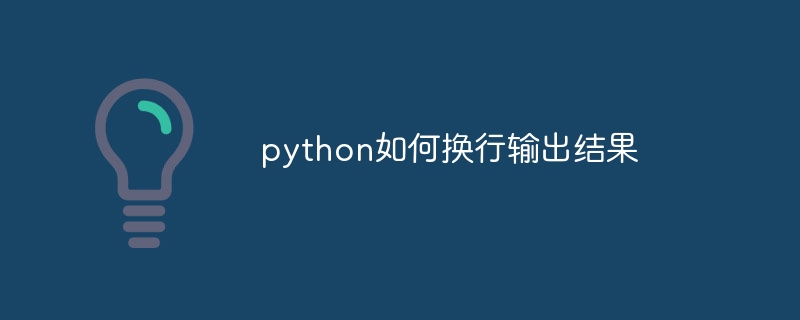Python 中可通过两种方式换行输出:1)在字符串末尾添加换行符 \n;2)使用 print() 函数的 end 参数,将其设置为 ""(空字符串)。选择方法时,如果需要在单个 print 语句中打印多行,使用 \n;如果希望在多个 print 语句中打印多行并控制换行位置,使用 print() 的 end 参数。

Python 中换行输出
在 Python 中,有两种常见的方法可以在打印结果时换行:
1. 使用换行符 \n
换行符 \n 表示新的一行。它可以添加到字符串末尾,以在打印时换行。
立即学习“Python免费学习笔记(深入)”;
<code class="python">print("Hello\nWorld")</code>输出:
<code>Hello World</code>
2. 使用 print() 函数的 end 参数
print() 函数的 end 参数指定行尾的字符。默认值为 \n(换行符)。要换行,可以将 end 设置为 ""(空字符串)。
<code class="python">print("Hello", end="")
print("World")</code>输出:
<code>HelloWorld</code>
选择方法
根据具体情况,可以使用以下准则来选择方法:
\n。print() 的 end 参数。以上就是python如何换行输出结果的详细内容,更多请关注php中文网其它相关文章!

python怎么学习?python怎么入门?python在哪学?python怎么学才快?不用担心,这里为大家提供了python速学教程(入门到精通),有需要的小伙伴保存下载就能学习啦!

Copyright 2014-2025 https://www.php.cn/ All Rights Reserved | php.cn | 湘ICP备2023035733号